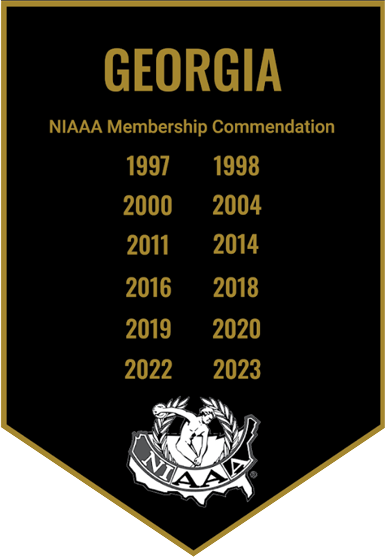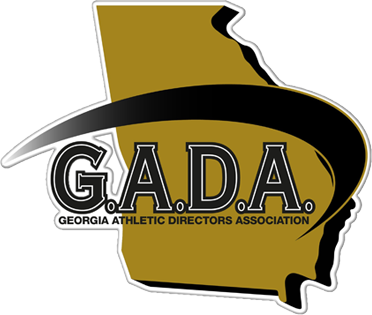Creating a High School Student Leadership Program
By Travis Seese, CMAA, and Colin Fegeley, CMAA on May 20, 2024
Many high school athletic departments in the country have a mission statement and values that boil down to helping every student-athlete to become the best version of themselves. One of the most important pieces to helping young people is having a plan to help them become leaders in their community, school and on their teams.
When creating or updating your student leadership program, there are a few key things to consider.
- How do you relay your mission, vision and values to your coaches and other staff members?
- How do you get this information to individual teams?
- What approach do you take to help individual students who have a passion for athletics within your program?
- What means and steps should you take to recognize student- athletes who meet your leadership development goals and are great ambassadors of your program.
A great place to start when creating a student leadership program is thinking about how you want to establish a school-wide culture of developing young leaders. A good first step is to have regular meetings with team captains and give them a voice to guide the direction of the program.
Another helpful idea is to hold an annual leadership meeting that is open to all athletes that intentionally lays out the vision and mission of the athletic department as well as addresses some topics that will benefit student-athletes such as mental health and the proper use of social media. If you allow the older players to plan and organize this annual session, they can develop ownership and help build the next generation of leaders. In addition, you may also want to consider bringing in guest speakers from the community to speak about leadership and other topics that can help reinforce the school’s vision and mission.
Once the culture is established on a department-wide level, it will naturally trickle down to the teams as the captains go through leadership training sessions and bring back the principles that were gained. It can be amazing to watch the growth of the athletic program and teams as student-athletes buy into the mission of having every young person reach their potential.
Teams can embrace this message in a number of ways including community outreach events such as volunteering at local non-profit organizations, partnering with an elementary school, adopting and collecting trash on a section of highway, or working to enhance the campus. Also pairing older players with younger players to act as mentors can be effective. One of the most difficult things of maintaining a department-wide student leadership program, however, is guarding against individual teams splintering off and doing their own thing. One way to guard against this is to regularly communicate with your head coaches about the goal of your athletic program and ways to incorporate it into their team programs without deviating too far.
A frequently overlooked aspect of building a leadership program is getting it down to the individual student level. Many schools have students who have aspirations to accomplish great things in athletics, but it is also important to find ways to help these young people develop their skills to prepare them for life after high school. Your athletic department may be able to offer students opportunities to work with social media, field care, game operations, sports photography and game announcing to mention a few.
One of the stumbling blocks of helping individuals to grow and develop is being afraid to let them fail. So much can be learned from failures, and it’s much better to learn in a low-stakes environment rather than when they leave high school. Allowing students to be in charge of specific areas within your athletic department with the proper amount of oversight will yield amazing results after high school. The skills and experience gained may carry over into the workforce, the military, or if they move onto college.
In addition to empowering student-athletes to take on additional roles within the athletic program, there is also great value in recognizing exceptional performance in the classroom and on the playing surface. Consider something as simple as a “Student-Athlete of the Week or Month” program that celebrates achievement on social media. A nice email home to parents or a handwritten letter can also go a long way.
At Athens Drive Magnet High School in Raleigh, North Carolina, in order to recognize student-athletes, the coaching staff and athletic director selects an all-school team, named the ‘We Are Athens Drive Team’ that is similar to an all-conference team based solely on the people within the athletic program who demonstrate exceptional performances.
Another opportunity to recognize outstanding young leaders on your campus is to create a scholarship program. This process can be led by your booster club or even your athletic conference. This allows you to acknowledge and honor young leaders on your campus, while incentivizing their future academic endeavors. Scholarships could be funded by a booster club, a local corporate sponsor, or even your athletic conference. Scholarship programs are great because they provide underclassmen a tangible measuring stick of success both academically and athletically.
At Green Level High School in Cary, North Carolina, the Gator Club offers two $1,000 scholarships annually to a male and female student-athlete who best uphold the values of the Green Level High School Athletic program while also maintaining a strong academic record. These scholarships are funded by a local business that has the honor of presenting them each year on the senior awards night. Winners are selected through an application and interview process that is overseen by a panel of school staff, coaches, the guidance department, and members of the booster club.
Most administrators should agree that helping student-athletes to develop their leadership skills is an important part of all athletic programs. The next generation may reach its potential, when you help everyone to become the best version of themselves.



